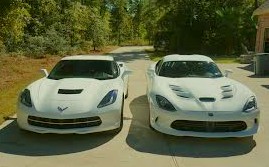Dr. Bates, the father of natural vision improvement, was an eye doctor and a scientist. If something about a patient’s eyes didn’t make sense, he didn’t consult a dusty textbook, he started exploring to find out the reason. Why could the person see letters which were all of the same size, some worse and some better? Why could a child read the eye chart fine, until his mother yelled at him to “Do it right!” when he suddenly couldn’t see well at all?
This scientific attitude of looking for what’s actually happening, instead of what you think should be happening, is at the heart of why Dr. Bates was so successful. He helped hundreds if not thousands of people improve their sight naturally. I’m taking on this approach myself with my own vision and that of my clients.
If I can’t visually understand something right away, I do NOT want to leap to discouraging thoughts of “I can’t see! My vision is still pretty bad!”. I’ll keep gently looking, like a little baby trying to decipher her brand-new environment, scanning around and visually exploring, thinking “What is that?”. Almost always, it will start coming more into focus and making sense to me.
An example from yesterday: I looked down the street from my living room, seeing how much I could see. Hmm… My stronger right eye (which I trust more) saw a double image of a faraway light-colored parked car. My weaker left eye saw a single blurry image. Rats! Does my dominant eye still have some astigmatism? (I’m not very happy right now.) I keep scanning and blinking, trying one eye then the other then both together. Now I’m starting to see the double image with the left eye too! ACK!!

Wait, isn’t the car image further in front (by just a speck) a bit darker beige in color? Eureka! It’s TWO SEPARATE SIMILAR CARS, parked side by side and mostly overlapping when seen from here! I do not have double vision, in either eye. Whew! I laughed at myself about this for a long time.
So I learned one more time that if I keep looking in a relaxed way and keep trusting my eyes, they will see pretty well for me. Panicking that I’m losing my vision does not help! And I noticed that even my weaker left eye eventually saw both cars, which was the correct interpretation of the visual input. And they were more than a few hundred feet away!
When I was a child I used to like those “What’s wrong with this picture?” drawings. I felt like a detective hot on the trail of a mystery, looking for clues as to what was “off”, like spotting a dog up in a tree. See if you can approach your visual experience like an explorer, or detective, or scientist too. You might notice something surprising, and learn even more about your marvelous eyesight.
get help on our Facebook Group!

I wore strong glasses, then contact lenses, from age 5 into my 40s. While making many mistakes, eventually l learned how to improve the way I use my eyes and to see in a more relaxed, healthy manner. It is my pleasure to coach others to do the same. Visit me at https://NancyLNeff.com.

Great article
Thank you Saadi. It was a big change in habits for me to start looking at my surroundings with relaxed interest, instead of desperately trying to decipher everything as fast as I could.
Wonderful thank you xbx
Thanks for reading, Billy!
Carolyn, hi, and thanks. I read every vision improvement book I could find when I started, sometimes more than once, yet it wasn’t until I started doing vision practices consistently, and noticing my reactions, that I really began to improve. I’m glad you’re working with a coach, as sometimes we’re so deep in our own patterns we can’t see them, so don’t even think of trying to change them! This work has taught me an enormous amount about myself, and it continues to do that.
I haven’t yet figured out how the forum works, but will soon. Nancy, I like your positive attitude a lot. I’ve followed Bates for many years, but in a haphazard way I do though have an abundance of books on the Bates topic and a terrific vision coach in Canada. The Iblindness site is appealing b/c I think of the inner work as so important for my own problems with cataracts and fusion problems. Thanks for your own contributions.